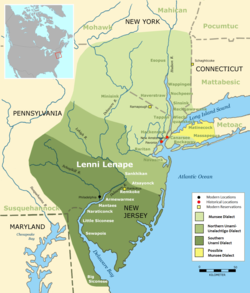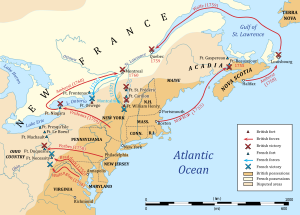A Brief History
On June 7, 1769, frontiersman and American legend Daniel Boone first laid eyes on the forests, hills and valleys of Kentucky, and this epic moment in US History is commemorated by the Kentucky Historical Society as National Daniel Boone Day each year on June 7th.
Digging Deeper
Daniel Boone, famed American pioneer, explorer, woodsman, hunter, trapper, frontiersman and legend was born in 1734 in Pennsylvania. His career on the frontier began at birth, as he was born in a log cabin, the 6th of 11 children to a Quaker family that had moved to America to escape religious persecution in England and Wales. His early life on the edge of civilization allowed him to hunt and become familiar with the woods, as well as socializing with local Lenape Indians.

A rift in the Quaker community began when 2 of Daniel’s siblings married outside of the Quaker faith and Dan’l’s father and brother were booted from the congregation. This led to the family moving to North Carolina in 1750, and Daniel never went to church again, though he considered himself a Christian. Boone was not formally educated, but picked up enough informal tutoring to be literate, though with famously unconventional spelling habits. Despite the mythical Boone seeming to be nearly illiterate, Daniel often read long novels on his hunting trips, and even read to his illiterate hunting companions.
The French and Indian War 1754-1763 fought between the British (which at this point Daniel and other North Carolinians were) and the French with their Indian Allies gave Daniel a baptism of war, in which he served as a wagon driver, engaging in actual combat and having close calls along the way. He also met john Finley (also spelled Findley) a fateful meeting for it was Finley that told Daniel about the rich and beautiful lands of the Ohio Valley to the West and North, planting the seed in Daniel that grew into the building of the Wilderness Road through the Cumberland Gap of the Appalachian Mountains leading to Kentucky.

Daniel married in 1756 (his first and only marriage) and had 10 children with his wife, the last of which, Nathan, became the first White (European) child born in what is now Kentucky. Boone worked as a hunter and trapper to support his family, going on long hunting/trapping expeditions and was gone for one stretch of 2 years in which he served with the Carolina Militia fighting Cherokee Indians. Peace with the Cherokee led to an influx of White settlers into North Carolina, causing Daniel to get restless and seek less crowded lands, first moving further West in North Carolina, then turning his sights on the fabled land of Kentucky (then actually part of Virginia).
Boone first set off for Kentucky in 1767, and in 1769 began a 2 year long hunt, during which he was captured by Shawnee Indians, who seized Boone’s pelts and equipment and ordered him to leave Kentucky and never come back (as the Shawnee considered Kentucky to be their sacred hunting grounds). Boone made it back to his family in 1771 and a year later was back to Kentucky. In 1773, Boone led a migration of his family and 50 other European settlers West, a move not tolerated by irate Native Americans resulting in Dunmore’s War between the Shawnee and the White settlers. Boone’s party was force to go back, and Boone went on an 800 mile trek with another man to war other White settlers of hostilities.
In 1775, Boone led 30 trailblazers in cutting out the Wilderness Road through the Cumberland Gap to Kentucky, and once again moved his family to Kentucky. Further fighting with Indians resulted in Daniel being shot in the ankle in 1777, and then in 1778 Daniel and a war party of settlers were captured by the Shawnee. Boone tricked the Indians by pretending to be a collaborator, for which he was later accused of selling out the White captives, though a trial proved his fidelity. Acting as a land agent for settlers to located and buy land in Kentucky, Boone was robbed of $20,000 of other people’s money in 1779 while sleeping in a tavern, creating debts which took him years to repay.

During the early 1780’s Daniel became a Lt. Colonel in the militia, a representative to the Virginia Assembly (Kentucky still part of Virginia) and was elected Sheriff of Fayette county. Daniel continued Indian fighting during this period, and was captured by British troops in 1781, though released soon after. As the American Revolution winded down, fighting continued in Kentucky, with Daniel in the thick of it.
After the American Revolution Daniel settled down a bit, becoming a tavern owner, land speculator and horse dealer. In 1787, Daniel owned a total of 7 slaves, a mark of wealth in those parts. Financial reverses ensued, and Boone moved to West Virginia, then back to Kentucky, trying several ways to make a living along the way. At this time Boone was becoming famous, the legend already starting to grow.
In 1799, Boone headed for new horizons, out to Missouri, then part of Spanish Louisiana. Spanish officials made Daniel a judge and militia commander and gave him generous amounts of land. When the US bought Louisiana in 1804, no records existed of title to the Boone land, and Daniel lost all his property. Boone appealed and in 1814 won his claims in Congress. At 76 years old in 1810, Daniel is said to have traveled all the way to the Yellowstone River on a long hunt, incredible at that age.

Daniel Boone died of natural causes at the age of 86 in 1820, complaining of stomach pains. Buried in Missouri, Kentuckians came to remove Daniel’s remains to rebury them in Kentucky, but probably got the wrong remains. Regardless of where his actual remains are buried, Daniel Boone is revered in all the states he lived in during his life. Schools, counties, cities, stamps and all sorts of things have been named in Daniel Boone’s honor, and his legendary character has graced the screen in movies and television. It is likely the character of Natty Bumpo in Cooper’s books about the frontier is based on Daniel Boone, and numerous cultural references have been made. In fact, as a grade school student I personally had a Daniel Boone lunch box!
Daniel Boone remains a favorite American icon. Question for students (and subscribers): What do you think about his exciting life, and what other frontiersmen do you admire? Please share your thoughts on this subject in the comments section below this article.
If you liked this article and would like to receive notification of new articles, please feel welcome to subscribe to History and Headlines by liking us on Facebook and becoming one of our patrons!
Your readership is much appreciated!
Historical Evidence
For more information, please see…
Kramer, Sydelle and Who HQ. Who Was Daniel Boone? Penguin Workshop, 2006.
You may also enjoy this article.


<span class="dsq-postid" data-dsqidentifier="16030 https://www.historyandheadlines.com/?p=16030">1 Comment
I did not realize that Daniel Boone participated in the French and Indian Way by becoming “a wagon driver, engaging in actual combat and having close calls along the way”. The knowledge I had of Daniel Boone was that of a great hunter.